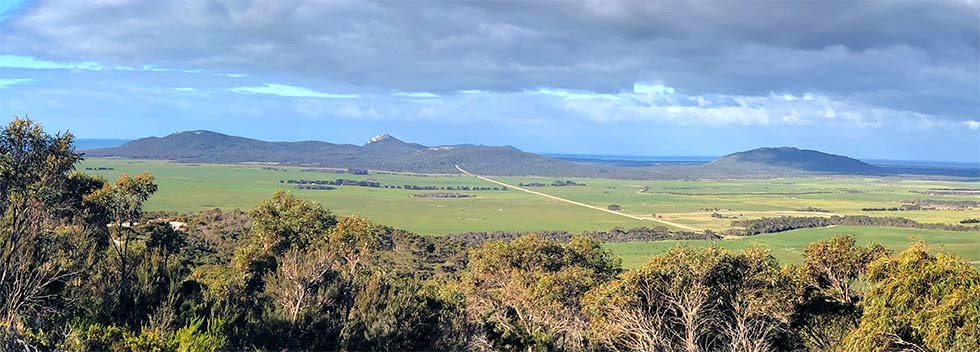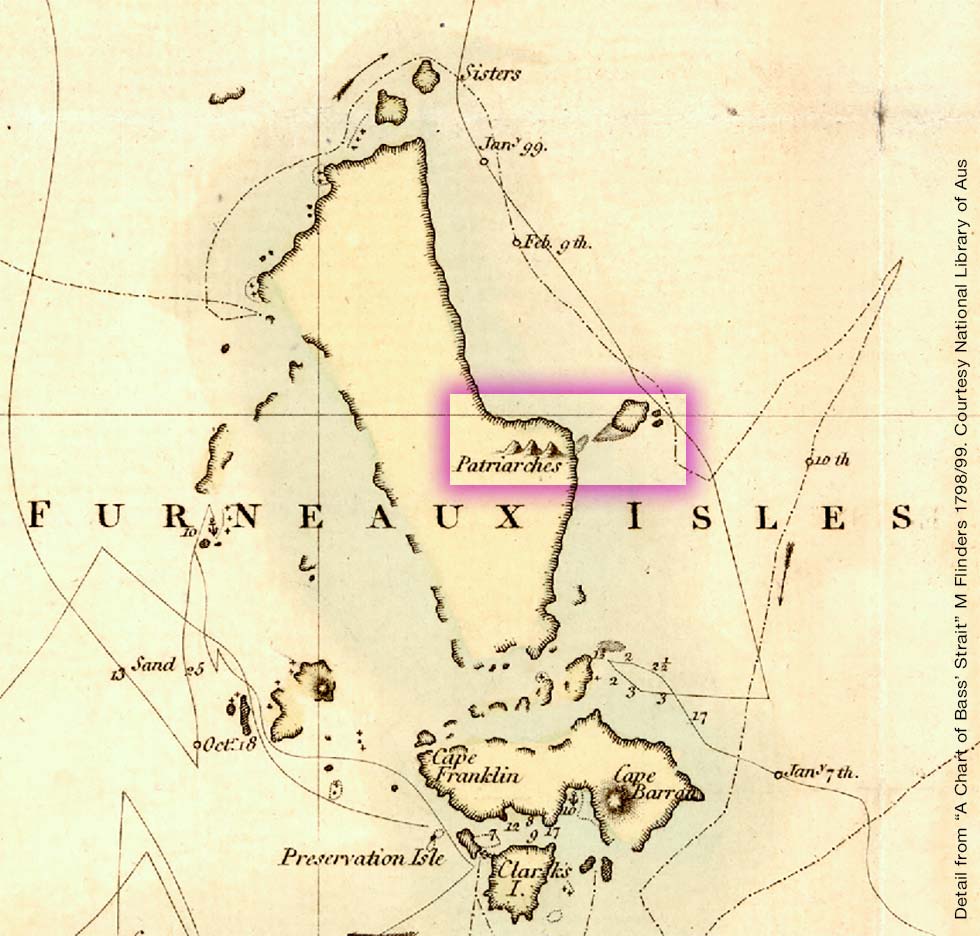
Seen in reverse...
Today when we look at the Patriarch Hills we mostly see their western sides outlined against the backdrop of the ocean. This was not the view they presented to Matthew Flinders however when he sailed up the eastern waters of the Furneaux Group and named these landmarks in February 1798.
Writing of the event in his journal, Flinders noted that:
"At half past four, the island we had passed bore north-west-half-north, the pyramid seeming to be distinct from the rest of the land [i.e. Babel Island]; and the two pyramids on the large island now appeared to be three distinct ones, and not unlike each other in form, the middle one being rather the smallest. As we judged them sufficiently old to deserve the title, I called them the Patriarches."

Flinders also wrote about this area when he returned here later in the same year. Then he noted that:
"The form of the land here is somewhat remarkable: upon the low projection of the great island [i.e. Flinders Island] there are three pyramidal hills, which obtained the name of the Patriarchs, and stand apart from the more western high land; and upon the south-west end of the island opposite there is also a pyramid, which, with other hills near it, presents some resemblance to the Lion’s Head and Rump at the Cape of Good Hope. This island and two rocky islets lying off its south-east end were afterwards called the Babel Isles. The largest is covered with tufted grass and brush wood; and the whole appeared to be much frequented by shags, sooty petrels, and other sea birds."